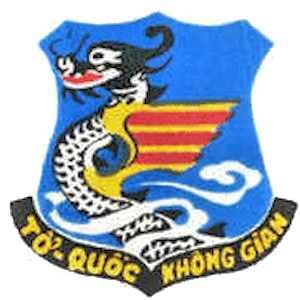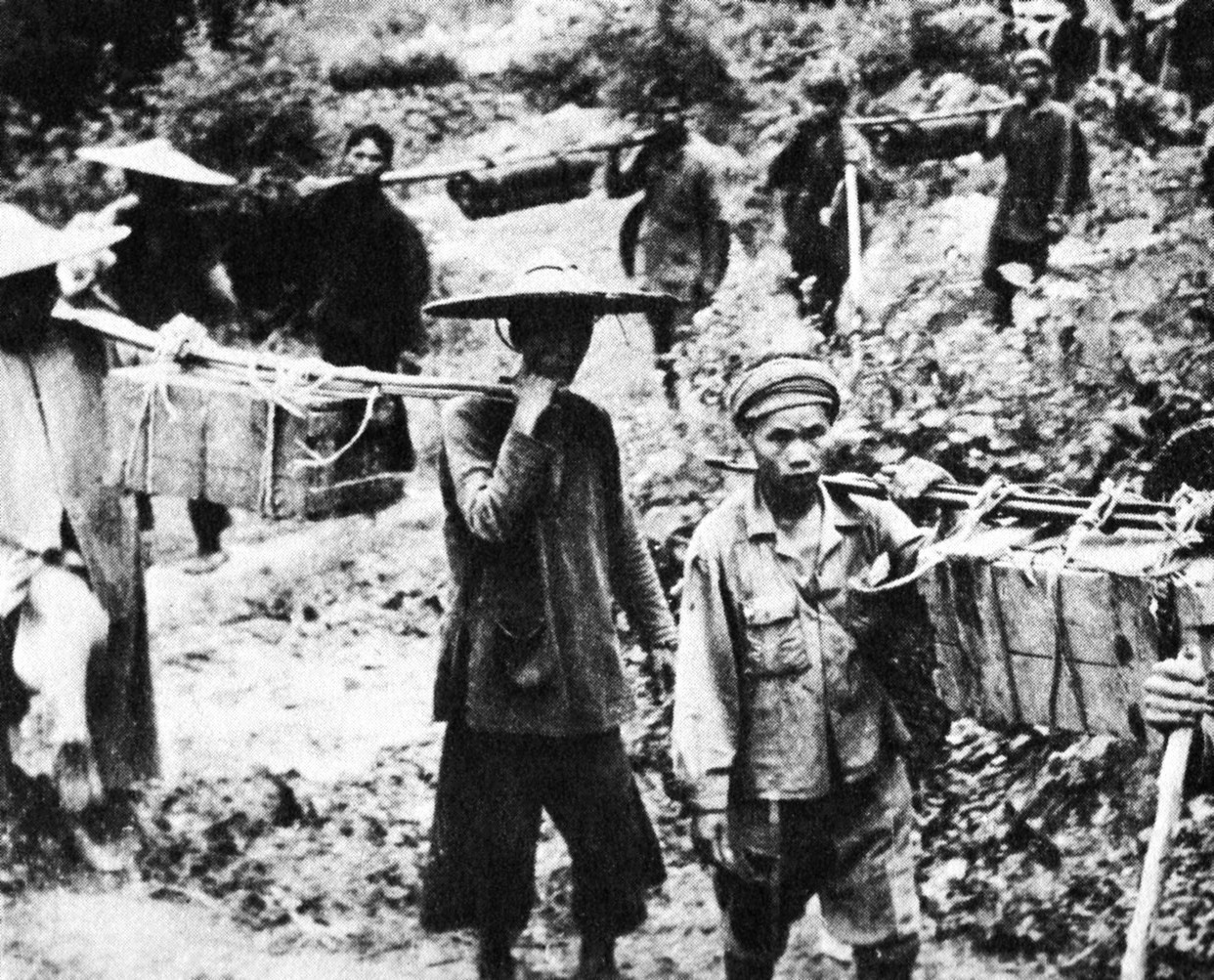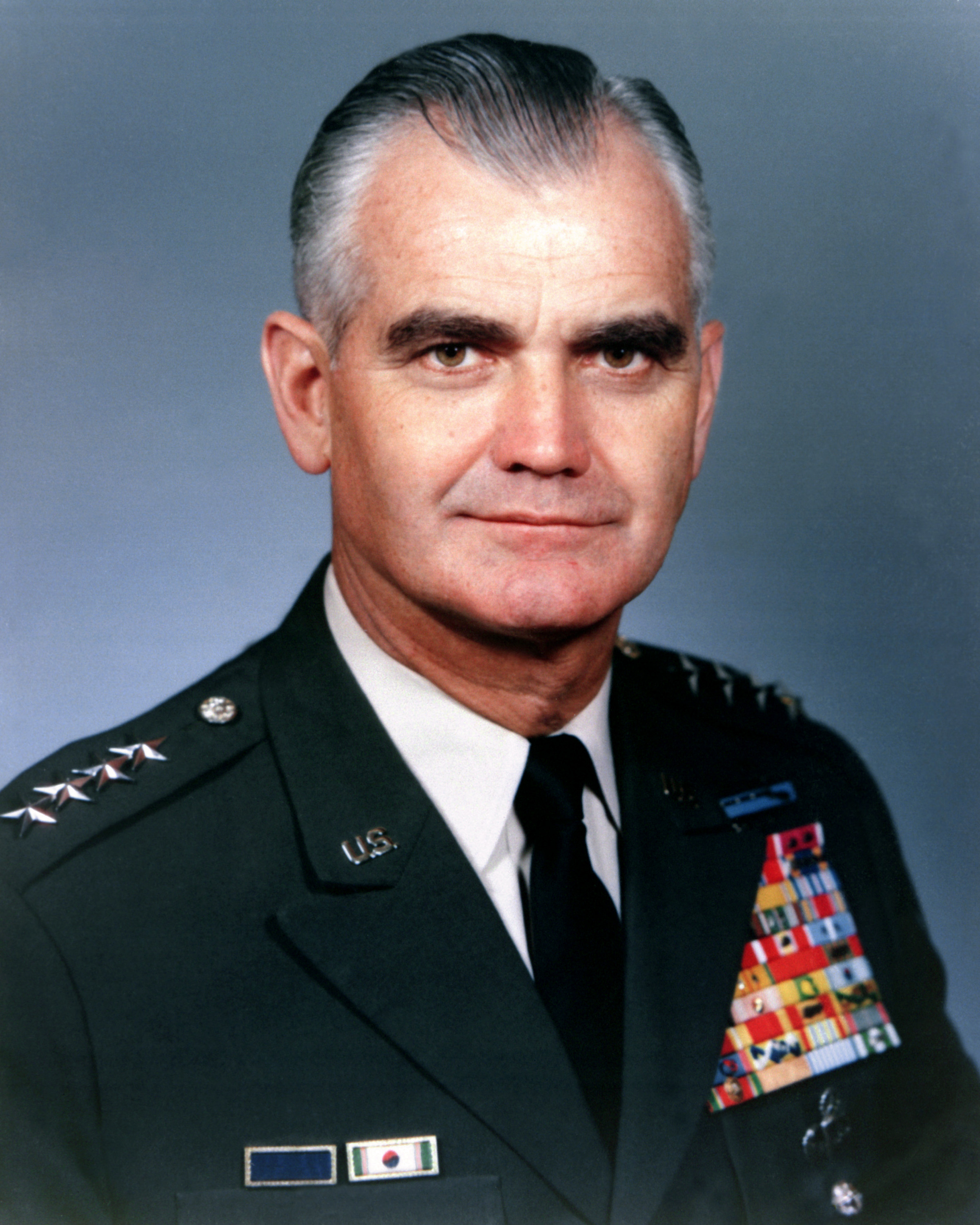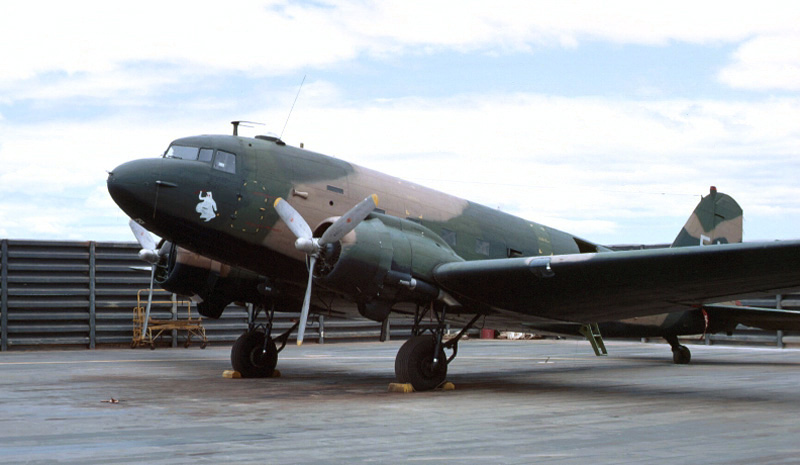|
Binh Thuy Air Base
Binh Thuy Air Base (also known as Can Tho Air Base and Trà Nóc Air Base) was a United States Air Force (USAF), United States Navy, Republic of Vietnam Air Force (RVNAF) and Vietnam People's Air Force (VPAF) ''(Khong Quan Nhan Dan Viet Nam)'' military airfield used during the Vietnam War. It is located 7 km northwest of Cần Thơ in the Mekong Delta. Construction Since June 1962 USAF units had supported RVNAF operations at Cần Thơ Airfield. In mid-1963 Military Assistance Command, Vietnam (MACV) proposed the construction of a runway at Cần Thơ to replace the existing runway at Sóc Trăng Airfield which was unsuitable for night and wet weather operations with a projected US$4.5 million construction cost and a 2-year construction period. In January 1964 given the need for heavier aircraft to be available for quick reaction air support in the Mekong Delta, CINCPAC approved the construction of a new airfield at Cần Thơ for a cost of US$2.5 million to be read ... [...More Info...] [...Related Items...] OR: [Wikipedia] [Google] [Baidu] |
Emblem Of The South Vietnamese Air Force
An emblem is an abstract or representational pictorial image that represents a concept, like a moral truth, or an allegory, or a person, like a monarch or saint. Emblems vs. symbols Although the words ''emblem'' and ''symbol'' are often used interchangeably, an emblem is a pattern that is used to represent an idea or an individual. An emblem develops in concrete, visual terms some abstraction: a deity, a tribe or nation, or a virtue or vice. An emblem may be worn or otherwise used as an identifying badge or patch. For example, in America, police officers' badges refer to their personal metal emblem whereas their woven emblems on uniforms identify members of a particular unit. A real or metal cockle shell, the emblem of James the Great, sewn onto the hat or clothes, identified a medieval pilgrim to his shrine at Santiago de Compostela. In the Middle Ages, many saints were given emblems, which served to identify them in paintings and other images: St. Catherine of Alexandr ... [...More Info...] [...Related Items...] OR: [Wikipedia] [Google] [Baidu] |
Sóc Trăng Airfield
Sóc Trăng Airfield was a French colonial, Imperial Japanese Army, United States Marine Corps (USMC), United States Army (US ARMY) and Army of the Republic of Vietnam (ARVN) and Republic of Vietnam Air Force (RVNAF) base located in Sóc Trăng in southern Vietnam. History Sóc Trăng Airfield was originally established in the French colonial era, it was subsequently used by the Japanese forces from 1940 to 1945. HMH-362#Vietnam War, HMM-362 with Sikorsky H-34, Sikorsky UH-34s codenamed Operation Shufly was the first USMC helicopter unit to serve in Vietnam arriving on 15 April 1962. Sóc Trăng was selected for the deployment because it had one of the few hard-surfaced runways in South Vietnam. HMM-362's mission was to provide transport and resupply for ARVN units throughout the Mekong Delta. On 1 August HMM-163 replaced HMM-362. In early September HMM-163 began moving north to Da Nang Air Base, completing the redeployment by 20 September. Other units stationed at Sóc Trăng ... [...More Info...] [...Related Items...] OR: [Wikipedia] [Google] [Baidu] |
Viet Cong
The Viet Cong (VC) was an epithet and umbrella term to refer to the communist-driven armed movement and united front organization in South Vietnam. It was formally organized as and led by the National Liberation Front of South Vietnam, and conducted military operations under the name of the Liberation Army of South Vietnam (LASV). The movement fought under the direction of North Vietnam against the South Vietnamese and United States governments during the Vietnam War. The organization had both guerrilla and regular army units, as well as a network of cadres who organized and mobilized peasants in the territory the VC controlled. During the war, communist fighters and some anti-war activists claimed that the VC was an insurgency indigenous to the South that represented the legitimate rights of people in South Vietnam, while the U.S. and South Vietnamese governments portrayed the group as a tool of North Vietnam. It was later conceded by the modern Vietnamese communist lead ... [...More Info...] [...Related Items...] OR: [Wikipedia] [Google] [Baidu] |
Tet Offensive
The Tet Offensive was a major escalation and one of the largest military campaigns of the Vietnam War. The Viet Cong (VC) and North Vietnamese People's Army of Vietnam (PAVN) launched a surprise attack on 30 January 1968 against the forces of the South Vietnamese Army of the Republic of Vietnam (ARVN), the United States Armed Forces and their allies. It was a campaign of surprise attacks against military and civilian command and control centers throughout South Vietnam. The name is the truncated version of the Lunar New Year festival name in Vietnamese, Tết Nguyên Đán, with the offense chosen during a holiday period as most ARVN personnel were on leave. The purpose of the wide-scale offensive by the Hanoi Politburo was to trigger political instability in a belief that mass armed assault on urban centers would trigger defections and rebellions. The offensive was launched prematurely in the early morning hours of 30 January in large parts of the I and II Corps Tactical Z ... [...More Info...] [...Related Items...] OR: [Wikipedia] [Google] [Baidu] |
Nha Trang Air Base
Nha Trang Airport (also known as Camp McDermott Airfield and Long Van Airfield) was a French Air Force, Republic of Vietnam Air Force (RVNAF), United States Air Force (USAF) and Vietnam People's Air Force (VPAF) ''(Khong Quan Nhan Dan Viet Nam)'' military airfield used during the Vietnam War. It is located on the southern edge of Nha Trang in Khánh Hòa Province. First Indochina War The French Air Force opened an air training center for the fledgling RVNAF in 1951 and in March 1952 began training pilots, navigators and maintenance personnel at the base. On 4 January 1953 maintenance personnel from the USAF 24th Air Depot Wing at Clark Air Base were sent on temporary duty to Nha Trang to provide maintenance support for Douglas C-47 Skytrains provided to the French Air Force, they would be replaced by French crews on 14 August 1953. In May 1953 USAF crews delivered 6 Fairchild C-119 Flying Boxcars to Nha Trang, these were then flown by Civil Air Transport crews to Cat Bi Ai ... [...More Info...] [...Related Items...] OR: [Wikipedia] [Google] [Baidu] |
14th Weapons Squadron
The 14th Weapons Squadron is a United States Air Force unit. It is assigned to the USAF Weapons School, stationed at Hurlburt Field, Florida. The squadron (aviation), squadron is a geographically separated unit of the 57th Wing at Nellis Air Force Base, Nevada. The mission of the squadron is to produce weapons officers for the special operations community by providing graduate level instructional flying on Air Force Special Operations Command aircraft through weapons instructor courses. Currently, the squadron produces special operations force weapons officers specializing in Lockheed AC-130, Lockheed MC-130 and Pilatus U-28 aircraft. The unit traces its lineage back to the 14th Observation Squadron and participated in the landings at Normandy in June 1944. Later, during the Vietnam era, the 14th Air Commando Squadron, flew Douglas AC-47 Spooky gunships between 1967 and 1968. The 14th flew out of Nha Trang Air Base, Phan Rang Air Base, Bien Hoa Air Base, and Binh Thuy Air Base, ... [...More Info...] [...Related Items...] OR: [Wikipedia] [Google] [Baidu] |
Kaman HH-43 Huskie
The Kaman HH-43 Huskie is a helicopter developed and produced by the American rotorcraft manufacturer Kaman Aircraft. It is perhaps most distinctive for its use of twin intermeshing rotors, having been largely designed by the German aeronautical engineer Anton Flettner. First flown on 21 April 1953, the HH-43 went into production and was operated by several military air services, including the United States Air Force, the United States Navy and the United States Marine Corps. It was primarily intended for use in aircraft firefighting and rescue in the close vicinity of air bases, but was extensively deployed during the Vietnam War. It was used as a search and rescue platform, having often been enhanced with makeshift modification and new apparatus to better suit the tropical conditions. The HH-43 was also exported to several other countries and sold commercially. It set several aviation records in its class, and was the first helicopter to experiment with twin-turbine engines. Th ... [...More Info...] [...Related Items...] OR: [Wikipedia] [Google] [Baidu] |
38th Rescue Squadron
The 38th Rescue Squadron (38 RQS) is an active United States Air Force Pararescue squadron. Part of the 347th Rescue Group, 23rd Wing, it is stationed at Moody Air Force Base, Georgia. The squadron flew combat search and rescue missions during the Korean War and the Vietnam War. Mission The 38 RQS trains, equips, and employs combat-ready pararescue and supporting personnel worldwide in support of U.S. national security interests and NASA. This squadron provides survivor contact, treatment, and extraction during combat rescue operations, and uses various fixed/rotary wing insertion/extraction assets and employs by any means available to provide combat and humanitarian search, rescue, and medical assistance in all environments. History The 38th conducted search, rescue, and recovery in Japan and adjacent waters from 1952 to 1957 including supporting operations in Korea and adjacent waters from 1952 to 1953. It operated 14 search and rescue detachments in South Vietnam and Thaila ... [...More Info...] [...Related Items...] OR: [Wikipedia] [Google] [Baidu] |
4th Special Operations Squadron
The 4th Special Operations Squadron is part of the 1st Special Operations Wing at Hurlburt Field, Florida. It operates Lockheed AC-130J aircraft providing special operations capabilities. Mission The squadron (aviation), squadron plans, prepares and executes AC-130J gunship missions, providing precise delivery of munitions supporting joint conventional and special operations forces. It directly supports Unified Combatant Command, unified and theater special operations commands by conducting close air support, armed aerial reconnaissance, and interdiction missions worldwide in support of United States Secretary of Defense, Secretary of Defense taskings. History World War II The first predecessor of the squadron was organized in April 1942 at Logan Field (Airport), Logan Field, Maryland. Shortly thereafter, operating from New Castle Army Air Base, Delaware, the 4th ferried aircraft to locations in Alaska, Africa, and Europe under the 2nd Ferrying Group. It also airlifted cargo a ... [...More Info...] [...Related Items...] OR: [Wikipedia] [Google] [Baidu] |
Douglas AC-47 Spooky
The Douglas AC-47 ( "Puff, the Magic Dragon") was the first in a series of fixed-wing gunships developed by the United States Air Force during the Vietnam War. It was designed to provide more firepower than light and medium ground-attack aircraft in certain situations when ground forces called for close air support. Design and development The AC-47 was a United States Air Force (USAF) C-47 (the military version of the DC-3) that had been modified by mounting three 7.62 mm General Electric miniguns to fire through two rear window openings and the side cargo door, all on the left (pilot's) side of the aircraft, to provide close air support for ground troops. Other armament configurations could also be found on similar C-47-based aircraft around the world. The guns were actuated by a control on the pilot's yoke. The guns to be active for firing would be selected by an aerial gunner on a control panel on the right side of the cargo bay. Normally, two aerial gunners would be pa ... [...More Info...] [...Related Items...] OR: [Wikipedia] [Google] [Baidu] |
Cessna O-1 Bird Dog
The Cessna O-1 Bird Dog is a liaison and observation aircraft that first flew on December 14, 1949, and entered service in 1950 as the L-19 in the Korean War. It went to serve in many branches of the U.S. Armed Forces, was not retired until the 1970s in a number of variants, and also served in the Vietnam War. It was also called the OE-1 and OE-2 in Navy service, flying with the Marine Corps, and in the 1960s it was re-designated the O-1. It remains a civilian-flown warbird aircraft, and there are examples in aviation museums. It was the first all-metal fixed-wing aircraft ordered for and by the United States Army following the Army Air Forces' separation from it in 1947. The Bird Dog had a lengthy career in the U.S. military as well as in other countries, with over 3400 produced. It was further developed into a turboprop-powered version in the 1970s, the SIAI-Marchetti SM.1019. An experimental variant was the Cessna 308, a one-off to explore the possibility of a 4-person l ... [...More Info...] [...Related Items...] OR: [Wikipedia] [Google] [Baidu] |
RMK-BRJ
RMK-BRJ was an American construction consortium of four of the largest American companies, put together by the United States Navy during the Vietnam War. Its purpose was to build critically needed infrastructure in South Vietnam, so that the Americans could escalate the introduction of American combat troops and materiel into Vietnam. This construction contract, amounting to $1.9 billion (equivalent to $14 billion in 2017 dollars), completed a construction program deemed to be the largest in history up to that time. The consortium derived its name from its four constituent companies: Raymond International, Morrison Knudsen, Brown & Root, and J.A. Jones. Over the ten-year life of the contract, RMK-BRJ trained 200,000 Vietnamese workers in construction and administrative trades. The use of a civilian contractor and construction force in an active theater of combat operations was authorized for the first time in U.S. history. Construction contract Context In the 1950s, the Uni ... [...More Info...] [...Related Items...] OR: [Wikipedia] [Google] [Baidu] |










